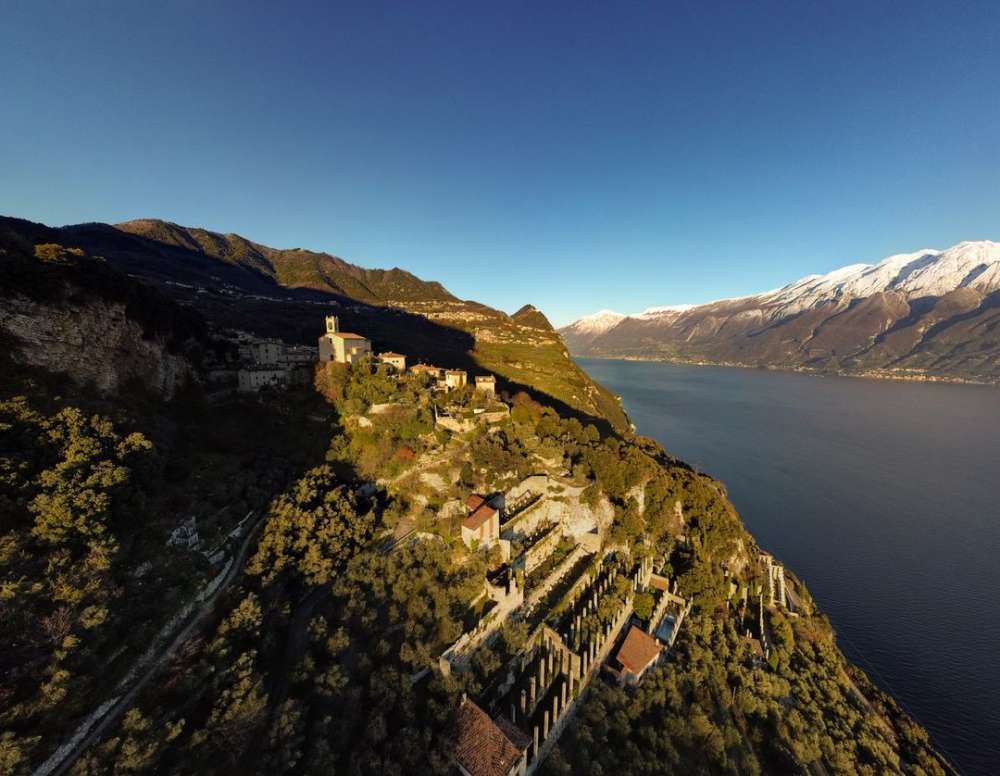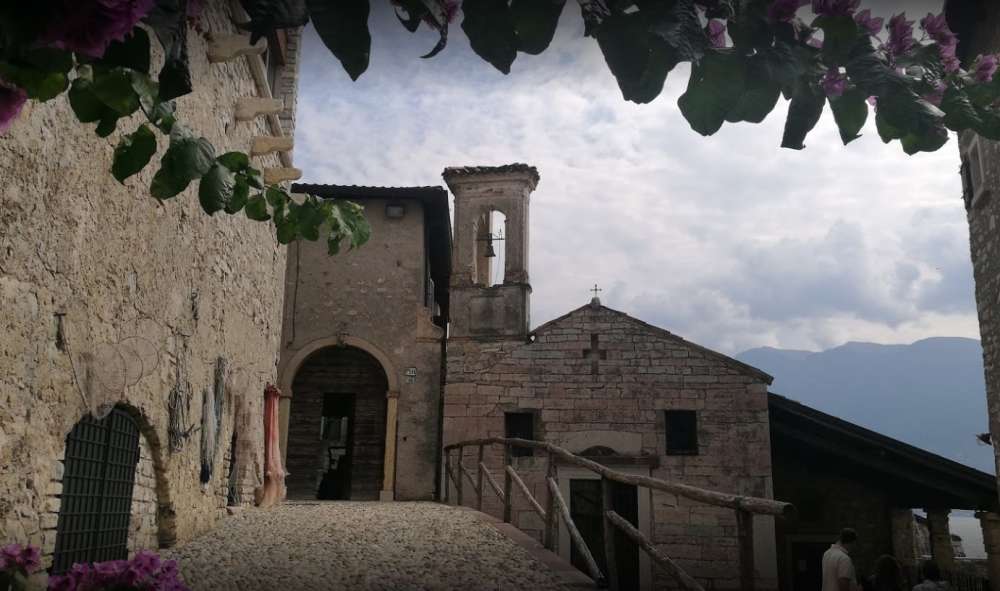

THE BASSA VIA DEL GARDA FROM TIGNALE TO GARGNANO
The trail runs along the Bassa Via del Garda, stretching from Limone to Salò along the West coast of the lake.
Park the car in Piazza Chiara d'Assisi, in Piovere. Head for the centre of the village, reach Piazza Cavour and then follow the directions to Muslone, marked by signpost 265. We suggest you stop and visit the Church of St. Mark.
After your visit, follow signpost 265 through ancient olive groves and a rocky area. You will reach Musolne, a hamlet in Gargnano. Go past the old fountains, and you will get in San Gaudenzio. Continue downhill towards Gargnano. This stretch of path is initially marked by signpost 265, and then by signpost 230. It crosses via Muslone at several points, up to via Crocifisso and to the traffic lights. Cross the road (Gardesana SS45bis) and walk towards the centre of Gargnano. There you will see a small harbour and Palazzo Feltrinelli, which used to be the university seat. Follow via Roma, the main road, then via Rimembranza and then walk along via San Giacomo for c.a. 2 km, up to the old church of St. Giacomo de Calì. Walk past the barrier blocking off vehicles, and then go uphill along Via Panoramica. That way, you will avoid the Gardesana road on your way to Piazza. As soon as you get in Piazza, you will see signpost 263, leading you back to trail 265 and to Piovere.
1-THE PARISH CHURCH OF ST. MARK
The church of St. Mark is located in panoramic position on a cliff overhanging the southern area of the village of Piovere. It was first documented in 1537, but was consecrated to St. Mark in 1633, when the relics of the saint were placed under the main altar. The main altar is dedicated to him and was built by the Valsabbia sculptors Pialorsi. The second altar on the left is dedicated to St. Anthony Abbot and the third to the Rosary.
In the church are two remarkable works: the woodwork of the Madonna and Child (15th century Veronese school) and the painting of the Madonna with Saints Mark, John the Baptist and Anthony of Padua. Equally interesting are the medallions depicting the mysteries of the Rosary (1704) and the painting of Saints Anthony, Roch and Valentine (Gianbattista Avvera, 1670).
This passage was taken from "Le Chiese dell'Alto Garda Bresciano", edited by Cristian Pollini.

2 - THE DRY STONE WALLS
“Dry stone walls are monuments to an iron will”. These words open the video presentation supporting the inclusion of dry-stone walls and their construction techniques in the list of the Intangible Cultural Heritage of UNESCO. To make the most of this harsh territory, the locals have produced artifacts which make our landscape very typical. On your way, you will often come across roccoli (typical hunting posts), calchére (typical kilns), lemon groves and terraces bordered with dry stone walls. Growing olives, vines and legumes for a living would not have been possible without ingenuity and hard work. The same applies to the construction of walls in the absence of binding agents.
4-ST. JAMES IN CALÌ
In the hamlet of San Giacomo (Gargnano), on the ancient road to Tignale, stands the church of St. James in Calino (en Calì in the local dialect). It is one of the most ancient of the area, just a few steps from the lake. The building is now surrounded by lemon groves and was probably built on an old pagan temple. The former temple dates back to the 7th or 8th century AD and it probably used to be a lodging for travellers on the Benaco coast. The beautiful frescoes from the 14th century and the fine statue of the saint nicely complement this unique building.

TECHNICAL DETAILS